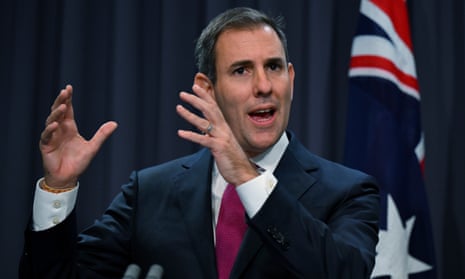Extract from The Guardian

Treasurer Jim Chalmers. According to the employment white paper, around 2.8m people are either unemployed and looking for work or in a job but under-utilised.
White paper to be released on Monday promises new policy initiatives including national skills passport.
Mon 25 Sep 2023 01.00 AEST
Last modified on Mon 25 Sep 2023 01.48 AESTThe treasurer, Jim Chalmers, will release the white paper on Monday, promising nine new policy initiatives including a national skills passport and the bid to boost Tafe with six new centres of excellence around Australia.
Labor will spend $31m on the Tafe centres and $10m to develop higher and degree apprenticeships, to develop bachelor level qualifications to enter into clean industries and the care economy without going to university.
Higher apprenticeships are vocational qualifications combined with paid employment. The government aims to double higher apprenticeships in a period of five years.
The white paper outlines five objectives for the Australian government: delivering sustained and inclusive full employment; promoting job security and strong, sustainable wage growth; improving productivity; filling skills needs and building the future workforce; and overcoming barriers to employment and broadening opportunity.
According to the employment white paper, around 2.8m people – one-fifth of the size of the total workforce – is either unemployed and looking for work or in a job but under-utilised.
“For every person in Australia reported in the labour force statistics as unemployed, there are four others who want to work but are not actively searching or available to work, or who want to work more hours,” it said.
The white paper defines the goal of “sustained” full employment as using the budget and interest rates to reduce economic volatility; and “inclusive” full employment as broadening labour market opportunities to prevent structural underutilisation.
“Everyone who wants a job should be able to find one without searching for too long,” the white paper said.
The white paper, excerpts of which were distributed by the treasurer’s office, said that full employment has often been “too narrowly” defined as the rate of employment that is believed to not increase inflation.
That can be “useful to gauge macroeconomic conditions” because it is “the current maximum level of employment that can be sustained in the short-term”.
“But it does not capture the full extent of spare capacity in our economy or the full potential of our workforce.”
Chalmers said the Tafe component will produce “more graduates with more of the skills they’ll need to make the most of the big shifts that are shaping our economy into the future – whether it’s the net zero transformation, growth in the care economy or adapting and adopting new technology”.
The skills and training minister, Brendan O’Connor, said the changing economy will need “highly skilled workers with vocational training [to] be complemented with cutting-edge research and knowledge”.
He cited trends including “the ageing of our population, the transition from hydrocarbons to renewables, [and] the evolution of information technology to artificial intelligence”.
“At its heart, these reforms are about what we need to do now and in the decade ahead, to set the vocational education and training sector up for success and we will continue to develop these reforms through the national skills agreement.”
On Sunday the government announced it will spend $9.1m on a business case to define the scope, outcomes and benefits of a national skills passport.
The policy aims to make it easier for employees to demonstrate their skills, change jobs and upskill, while making it simpler for employers to hire new staff with the skills and qualifications they need.
No comments:
Post a Comment